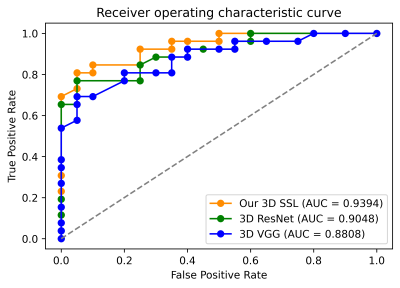Xiaofeng Liu1, Fangxu Xing1, Chao Yang2, C.-C. Jay Kuo3, Suma Babu4, Georges El Fakhri1, Thomas Jenkins5, and Jonghye Woo1
1Gordon Center for Medical Imaging, Department of Radiology, Massachusetts General Hospital, Harvard Medical School, Boston, MA, United States, 2Facebook AI, Boston, MA, United States, 3Department of Electrical and Computer Engineering, University of Southern California, Los Angeles, CA, United States, 4Sean M Healey & AMG Center for ALS, Department of Neurology, Massachusetts General Hospital, Harvard Medical School, BOSTON, MA, United States, 5Sheffield Institute for Translational Neuroscience, University of Sheffield, Sheffield, United Kingdom
1Gordon Center for Medical Imaging, Department of Radiology, Massachusetts General Hospital, Harvard Medical School, Boston, MA, United States, 2Facebook AI, Boston, MA, United States, 3Department of Electrical and Computer Engineering, University of Southern California, Los Angeles, CA, United States, 4Sean M Healey & AMG Center for ALS, Department of Neurology, Massachusetts General Hospital, Harvard Medical School, BOSTON, MA, United States, 5Sheffield Institute for Translational Neuroscience, University of Sheffield, Sheffield, United Kingdom
Our successive subspace learning approach,
using a total of 20 controls and 28 patients, achieved an accuracy of 93.48% in
differentiating ALS patients from controls, showing its robustness and
accuracy, compared with the state-of-the-art 3D CNN classification methods.

